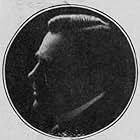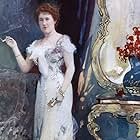The pictorial aspect of "The Red Woman," a five-reel western photo- melodrama released by the World Film Corporation, is of considerable merit. Scenes showing striking exteriors in New Mexico are frequent, and the phases of western life are reproduced with commendable fidelity. The story is a fairly good example of its class, but a situation that is intended to be taken seriously is turned into farce by its absolute impossibility, and the play ceases to be impressive from then on. The situation referred to is where one of the actors poses as the statue of an Indian god and the Chihuahua heroine is supposed to take a club and knock him to bits and place her white lover in the statue's place. This is done to hide the hero from a revengeful Mexican who, later in the drama, stands within two feet of his rival and fails to detect that he is alive. Maria Temosach, the Indian heroine, has been educated at an eastern college, but returns home to resume the dress and customs of her people. A Mexican cattle thief tries to win her, but she favors a young American who has been sent west by his father to make a man of himself. Maria saves him from being murdered, and the two fall in love. A child is born to the Indian girl, and the American then marries Maria. The picture is not wanting in action, but the incidents do not always dovetail smoothly. Gail Kane is a handsome Indian maiden, and Morton Dean cannot be blamed for falling in love with her, but her eastern education must have made radical changes in her nature; she has all the characteristics of a white woman when she returns to New Mexico, and exhibits the grace, mental alertness and volubility of the race. Mahlon Hamilton is a consistent representative of the young American, and Ed. P. Roseman looks and acts the Mexican bandit with equal success. June Elvidge in an adventuress role is a stunning figure in riding breeches and plays the part excellently. Charlotte Earlcott is well cast as the mother of the adventuress. – The Moving Picture World, February 17, 1917











